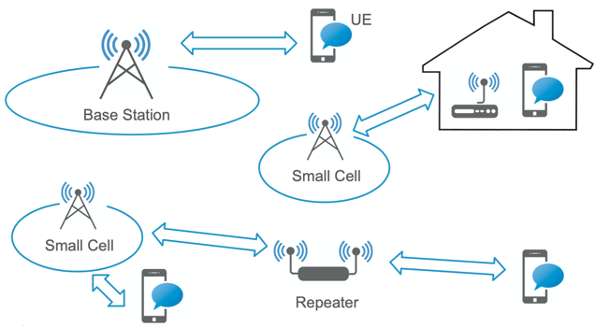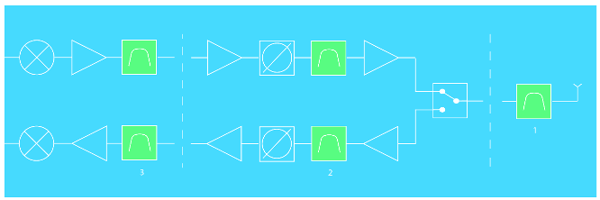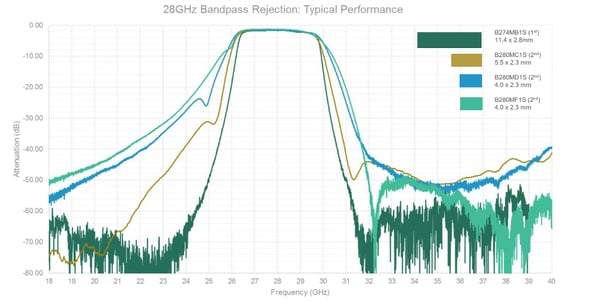As 5G innovation forges on, radio systems continue to emerge. Each system has a range of requirements, including specific RF filter performance needs, and it’s up to the 5G FR2 Ecosystem of suppliers to meet that demand. In response, Knowles Precision Devices (KPD) supports a wide variety of 5G radio applications.
As the mmWave spectrum helps to close the 4G data gap, more systems require low-power, low cost beamforming techniques. Radio access network (RAN) links, commonly used in mobile telecommunications systems, can be broken down into three node types: base station, user equipment, and repeater. These node types all have mmWave capability, and each of their unique requirements impact architecture decisions in 5G equipment.

Figure 1: Access network example
Base stations are used to connect the core network to the end user. In both base stations and small cells, filter placement depends on the requirements of the system. These requirements are dictated by industry standards (e.g. 3GPP, the primary cellular RAN standards organization) and the other system building blocks (e.g. emissions, linearity and power requirements). For example, 3GPP has used the F3, F2, and F1 reference locations when discussing filter feasibility. While there might be several viable locations for a filter, in the case of Figure 2, Position 1 requires filters to be half a wavelength, or less, in size. Positions 2 and 3 could accommodate a larger component, like a B274MB1S (see Figure 3).

Figure 2: Single TR and RX RF Path to Antenna Element; Tdoc R4-164226, ‘On mm-wave technologies for NR’
5G user equipment, like smartphones, create thermal complexities and cost challenges for 5G device designers. As the industry works to minimize the cost of this technology, designers are looking for solutions to keep prices manageable. For example, repeaters have the benefit of lower cost and lower power draw; however, they have their own RF filtering requirements depending on the type of repeater in the system (e.g. wideband, carrier specific, etc.). When it comes to filtering in 5G, one solution will not suffice for all applications.
At KPD, filter modifications allow customers to meet performance specifications within the available footprint. Typically, performance impacts size; better performance implies a larger overall component size. Figure 3 shows four different Knowles Precision Devices (KPD) filter offerings at the 28 GHz frequency. The dark green color represents data from the largest component with the highest selectivity, B274MB1S--a first generation component. The other three designs are using KPD second generation components with higher permittivity dielectric materials. B280MD1S and B280MF1S are optimized for sub-half wavelength at 28 GHz and just over a quarter wavelength in width. B274MB1S and B280MC1S are more appropriate in applications where size is not a primary constraint. Adjusting filter performance can reduce the overall size and performance of the system at a reduced cost in manufacture.

Figure 3: Typical performance of 4 different KPD 28 GHz filter offerings
Rather than taking a “round peg, square hole” approach, KPD designs filter offerings to meet a range of needs across the ecosystem. For more information, visit our Bandpass Filter product page or contact us to discuss your specific application and requirements.

